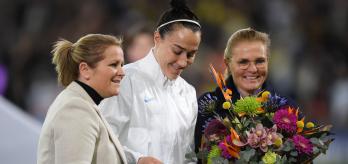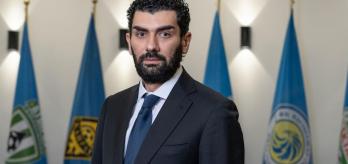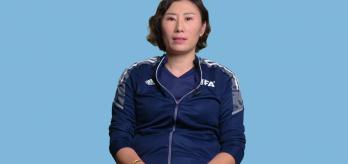How Sablon’s team helped create Belgium’s golden generation
Sablon and colleagues are credited with developing a new individual player development programme, based on small-sided formats of the game, that helped produce a “golden generation” of talent including Kevin De Bruyne, Vincent Kompany and Eden Hazard.
“For the whole project implementation we went to the clubs, where we presented in a top-down system from professional to amateur level, the vision, mission, and Belgian development philosophy to be implemented at each national and regional level,” explains Sablon, who works as a FIFA expert.
“More than 160 times we reserved the evening in clubs to explain our plans and our new approach,” adds Sablon. “After we explained our approach in the boardroom or meeting room we went to the pitch for a practical training session where we demonstrated the transition from theory to practice. We showed 5v5 and how we would teach their players to play 5v5, then 8v8 and up to 11v11. Our direct visits to the clubs, to explain the vision and the practical sessions was the advantage we had.”
Remain patient and stick to the plan
Remaining patient and sticking to the plan in the face of resistance are two key principles national associations must remain dedicated to when implementing a new player development approach and national playing philosophy, believes Sablon.
“Of course, all coaches have their own ideas and preferences,” he explains. “Sometimes there were big discussions and some clubs said, ‘no we don’t do this’. But after a while, when they saw that the results were there - and I don’t mean the results of the game, I mean the results of the development of players: improving the players, making the players better - they came and joined.”
Recruit effective staff members to implement the vision
Recruiting the best staff for each area of the technical department is a key part of ensuring a new vision for player development plan can be implemented. All staff must work to the “vision and spirit” of the organisation, says Sablon.
“If you have perhaps 30 different staff working in different areas covering talent development, coach education, women’s football, goalkeeping, physical education and all those different projects, as the technical director, you have to handle it,” says Sablon.
“You have to know: who is leading the planning? What is the content for coach education? What is the content for the women’s programme? How will they do it? What is the budget? What are the timelines? Drawing up a monthly progress report of all projects can be a necessary and useful tool for the follow-up and communication to internal and external stakeholders.
“As the technical director, you have to follow up on all of those different projects. You are responsible for your people and you have to convince them that they work together and they work in the spirit of the vision of the federation. That is also part of the long-term plan. You will need to have long discussions and long meetings with people in order to convince them. As a leader you have to start all projects with ‘the end in mind’.”













